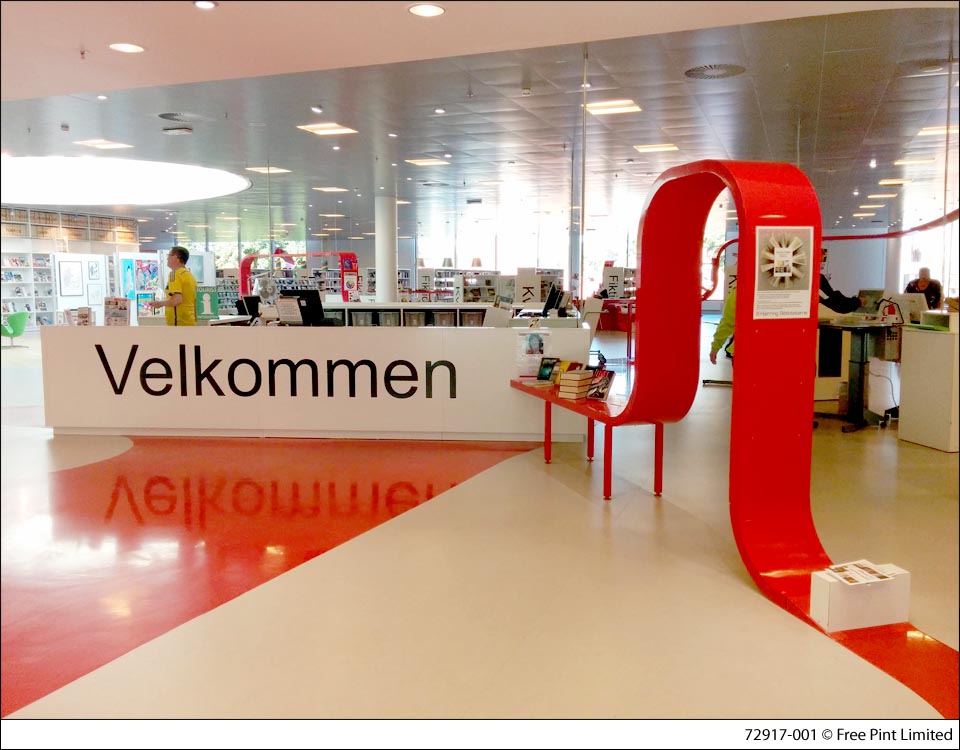 Cycling for Libraries Day 7 - What We Can Learn from Public Libraries
Cycling for Libraries Day 7 - What We Can Learn from Public Libraries
Jinfo Blog
9th September 2015
Abstract
Robin Neidorf continues on the Cycling for Libraries event and looks at how we can apply lessons from public libraries to corporate information centres.
Item
One of my goals for participating in Cycling for Libraries was to better understand public and academic libraries, to see what we on the corporate side of information work might be able to learn from them.
In Norway, as I commented earlier, I was struck by the realisation that the degree to which knowledge workers engage with information centres and information professionals can be influenced by their experiences in public and academic libraries.
Information Centres: An Essential Part of Organisations
Happily, our site visits throughout the tour to date demonstrate that these institutions are working diligently on many of the same issues that corporate information centres address: outreach to users, deepening engagement, setting and meeting goals around information literacy and information-seeking behaviour, and embedding themselves in the consciousness of their users.
If they succeed, our organisations get the benefit of future employees who naturally think of information centres, people and resources as a desired and valued part of their workflow.
Drivers for Reinvention
Unfortunately, it's also clear from many conversations on the road with my fellow riders that public libraries face the same challenges to their relevance we hear all the time: Will the library still be around in 10 or 20 years? What's the point of a library in the age of Google and digital materials?
The smart ones are responding with a searching review of their purpose, configuration and use of resources, and reinventing themselves as a result.
Exploring Hjørring Public Library
The public library in Hjørring, Denmark, wins our highest approval for reinvention, engagement and inspiration. The library is located on the second floor of a commercial shopping centre, putting it right in the middle of the "workflow" of its patrons.
In planning the configuration of the physical space, the library worked with artists to create an environment that provokes different feelings in different parts of the area: inspiration, calm, excitement, joy, productivity and more.
A "red line" connects and divides all the spaces in the library -- sometimes on the floor, sometimes as tables or display areas. It's a bold element that helps users identify where to go for what they need, as well as interest them in exploring other areas.
This library is enchanting. We explored rather than toured.
Aim to Inspire, Excite and Engage
Why do we lose this power when we move into corporate settings? Shouldn't our information centres - whether physical or virtual - similarly inspire, engage and invite? How might our relationship with our users (and stakeholders) be different if we set and met the expectation that the information centre is the innovation centre?
Granted, there are many approaches and tactics that work only in a public library setting, but we can take successful concepts and adapt them to our environments. Some of the best ideas I've seen so far:
- Go where the users are: what's your equivalent of the shopping mall? The main street?
- Be identifiable: how can you visually identify yourself as the information expert, so that users know you are the one to ask?
- Enable gathering: provide physical or virtual environments in which users can come together to work on problems and solutions - if they perceive you as only a place for basic transactions or storage of information, you're losing the battle.
- Service first: the most successful have taken their cues, and often their training, from the hospitality industry.
I've encouraged site visits. Include public libraries in your list of places to visit. See how the best of them build information awareness in their users. Then take what's adaptable to reframe your relationship with users and other stakeholders.
- Blog post title: Cycling for Libraries Day 7 - What We Can Learn from Public Libraries
- Link to this page
- View printable version
- Can I Help You?
Tuesday, 15th September 2015 - Get Away from your Desk to Analyse your Work
Tuesday, 15th September 2015 - Cycling for Libraries Day 6 - I've Never Moderated a Panel in Lycra
Tuesday, 8th September 2015 - Cycling for Libraries Day 4 - The Power of the Site Visit
Monday, 7th September 2015 - Cycling for Libraries Day 3 - Lessons from Norway
Friday, 4th September 2015 - Cycling for Libraries Day 2 - I Could Be Talking to Corporate Staff
Thursday, 3rd September 2015 - Cycling for Libraries Day 1 - The Right Equipment Makes All the Difference
Wednesday, 2nd September 2015
From information retrieval to integrated intelligence - with Dow Jones
23rd January 2025
AI contracting and licensing; Strategic information managers; End-user training
10th December 2024
- Jinfo Community session (TBC - Mar 2025) (Community) 20th March 2025
- Jinfo Community session (TBC - Feb 2025) (Community) 25th February 2025
- From information retrieval to integrated intelligence - with Dow Jones (Community) 23rd January 2025



